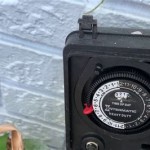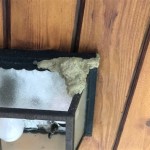How to Get Paint Off Outdoor Furniture
Outdoor furniture is a popular addition to any backyard, patio, or balcony. It provides a comfortable and stylish space for relaxing, entertaining, and enjoying the outdoors. However, over time, outdoor furniture can become stained, faded, or even coated with paint. Whether it's a stray paint splatter from a DIY project or the remnants of a previous owner's creative choice, removing paint from outdoor furniture can seem like a daunting task.
Fortunately, there are several effective methods for removing paint from outdoor furniture, depending on the type of paint, the material of the furniture, and the severity of the paint job. This guide will provide a step-by-step approach to removing paint from outdoor furniture, offering specific techniques and tips for each type of material and paint.
Removing Paint from Wood Furniture
Wood furniture is a common material for outdoor furniture, offering durability and a natural aesthetic. To remove paint from wood furniture, the following steps can be implemented:
- Prepare the Surface: Begin by thoroughly cleaning the wood surface with a mild soap and water solution. This removes dirt, grime, and any loose paint. Allow the surface to dry completely before proceeding.
- Use a Paint Scraper: If the paint is thick or dried on, using a paint scraper can be an effective way to remove it. Gently scrape the paint away, working with the grain of the wood to avoid damaging the surface.
- Apply Paint Remover: For stubborn paint, a chemical paint remover can be used. Choose a remover that is specifically designed for use on wood. Apply the remover according to the manufacturer's instructions, and use gloves and eye protection to avoid contact with skin and eyes. Be sure to test the remover on an inconspicuous area first to ensure it does not damage the wood.
- Sanding: Once the paint is loosened, sand the surface with fine-grit sandpaper to smooth out any remaining paint residue. Work with the grain of the wood to obtain a uniform finish.
- Clean and Finish: After sanding, wipe the wood surface with a damp cloth to remove any dust and debris. The wood can be left natural or stained or painted according to your preference.
Removing Paint from Metal Furniture
Metal furniture, such as wrought iron or aluminum, can be more challenging to remove paint from due to the material's durability. Here's how you can tackle paint removal from metal furniture:
- Use a Heat Gun: A heat gun can be used to soften the paint, making it easier to remove with a scraper. Apply the heat gun to the painted area until the paint begins to bubble. Be careful not to overheat the metal, as this can cause damage.
- Apply Paint Remover: Similar to wood furniture, a chemical paint remover can be used on metal. Choose a remover specifically designed for metal and follow the manufacturer's instructions carefully. Wear protective gear and test the remover on a small, inconspicuous area first.
- Sanding: Once the paint is softened or loosened, use sandpaper to remove any remaining paint residue. Start with a coarse-grit sandpaper and gradually move to finer grits for a smooth finish.
- Wire Brush: For stubborn paint, a wire brush can be used to scrub away the paint. This method is best for removing paint from intricate metal designs or crevices.
- Clean and Finish: After removing the paint, clean the metal surface with a damp cloth to remove any residue. You can leave the metal bare or apply a primer and paint if desired.
Removing Paint from Plastic Furniture
Plastic outdoor furniture, like chairs or tables, can be a bit more delicate when dealing with paint removal. Here's a guide to removing paint from plastic furniture:
- Use a Plastic Scraper: A plastic scraper or a putty knife can be used to gently scrape away the paint. Be cautious not to scratch or damage the plastic surface.
- Try Vinegar and Baking Soda: A mixture of vinegar and baking soda can create a paste that can help loosen paint. Apply the paste to the painted areas and allow it to sit for several hours. Then, scrub the mixture with a soft brush and rinse with water.
- Apply Paint Remover: If the paint is stubborn, you can use a paint remover specifically designed for plastic. Always test the remover on an inconspicuous area first and follow the manufacturer's instructions carefully. Wear gloves and eye protection.
- Soak in Warm Water: If the paint is water-based, soaking the plastic furniture in warm water for several hours can help to soften the paint, making it easier to remove with a scraper or brush.
- Clean and Finish: After removing the paint, clean the plastic surface with a damp cloth and mild soap. You can leave the plastic natural or repaint it if desired.
It's important to note that different paint types may require different approaches for removal. Oil-based paints are typically more difficult to remove than water-based paints. Additionally, the age and thickness of the paint can also influence how easy it is to remove.
When working with any paint remover or chemicals, always wear protective gear, including gloves, eye protection, and a mask. Work in a well-ventilated area, and follow the manufacturer's directions carefully. If you are unsure about the best approach for removing paint from your outdoor furniture, it's always wise to consult a professional for advice.

How To Strip Old Paint From Wooden Garden Furniture Little Knights

How To Strip Paint From Garden Furniture Ronseal

How To Strip Paint On Dining Chairs Reinvented Delaware

How To Remove Paint From Metal Diyer S Guide Bob Vila

How To Remove Paint From Wood Finishes Direct

How To Strip Paint On Dining Chairs Reinvented Delaware

How To Strip Paint On Dining Chairs Reinvented Delaware

How To Repaint Metal Outdoor Furniture

How To Refinish Metal Patio Furniture That S Covered In Rust

Removing Rust Old Paint And Repainting Metal Patio Furniture







